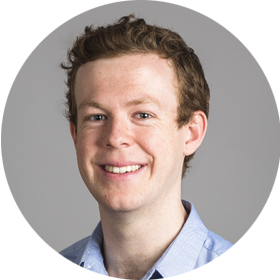The preparation and full characterization of an iridium complex of the monocarba-closo-dodecaborate anion is reported. It was prepared by B–H bond activation using a tosyl amide directing group.
Analysis by spectroscopic methods and X-ray crystallography revealed the presence a direct B–Ir interaction. The carborane acts as aB,N chelating ligand towards the Ir(Cp*)(solvent) fragment, resulting in a monomeric complex that is inert in solution and the solid state.
Treatment with N-chlorosuccinimide resulted in selective monochlorination of the B–Ir position. In addition, its structure, spectroscopic features and reactivity were investigated by DFT calculations.

Q: WHAT IS THE FOCUS OF YOUR LAB’S RESEARCH?
A: One of the focus points for Ley Group research is the development of continuous flow synthesis methods. We aim to include new enabling techniques into our work to facilitate the collection of data relevant to the reactions we conduct. We work across the early synthesis spectrum – from discovery to scale-up and process development.
Q: WHAT WAS YOUR PREVIOUS WORKFLOW AND EXPERIENCED CHALLENGES?
A: Standard detectors we use in our work can be problematic when trying to discern what is in a product mixture leaving a flow reactor. For example, UV detectors are useful only in very restricted flow-based situations and don’t give compositional information. IR is a step up from this, but suffers from issues when peaks in starting materials, products and by-products overlap. Some transformations may also lead to undetectable changes in an IR spectrum. While flow-based NMR can be good when it’s usable, its expense and lack of resolution at a bench-top level hinder its utility.
Q: WHY DID YOU INCORPORATE THE EXPRESSION® CMS INTO YOUR LABORATORY?
A: The expression® CMS struck the perfect balance between cost, ease-of-use and detection capabilities that we needed for our research. We’re able to get large amounts of relevant information about reaction mixtures, in real-time, without worrying in most cases about overlapping peaks or detection signals. This information is used by our control systems to make decisions about product stream composition, allowing us to automate procedures such as reaction telescoping, process start up and self-optimization. The expression® CMS software is fantastic also – everything is recorded, letting us go back over the raw data to gain even more insights into how product compositions change over time in our processes.
Q: TO WHOM WOULD YOU RECOMMEND THE EXPRESSION® CMS?
A: I would recommend the system to any group that works with continuous flow chemistry, especially those that need real-time analysis of stream compositions. The ease at which the unit can be integrated into any process makes it an extremely attractive unit to use. It’s also very easy to switch the expression® CMS into a standalone MS unit for independent sample analysis, making it versatile in any organic chemistry laboratory.
Q: HAVE YOU CONTRIBUTED TO ANY PUBLICATIONS USING THE EXPRESSION® CMS?
A: Org. Process Res. Dev., 2016, 20, 386–394
Direct sample analysis of liquids, solids and powders without chromatography is as easy as it sounds, and provides mass spectral information within seconds. The video demonstrates analysis of a reaction mixture.
The inert Atmospheric Solids Analysis Probe (iASAP) allows easy sampling of air-sensitive compounds, such as metal catalysts and organometallics, from reactions that are carried out in a glovebox or Schlenk line.
Quant Express, an addition to Advion’s user-friendly Mass Express 4.0 software suite, features quantitation to create a fully integrated software system for expression CMS users.
Introducing a new type of mass spectrum, available exclusively in the Advion Peak Express™ software suite: the Delta Spectrum (ΔS). The ΔS is available with the expression compact mass spectrometer (CMS) to look beyond chemical noise and automatically detect even the smallest peaks without knowing the m/z in advance.
With the Peak Express™ software, you can:
- Find minor components and impurities you would otherwise miss
- Find unknowns in complex samples like natural products
- Acquire XIC-quality data while scanning the entire mass range, allowing Peak Express™ to tell you the m/z
- Perform real-time, mass-directed purification without knowing the mass Realize automatic ‘expert’ data processing
Turn your expression® CMS into a high resolution, exact mass instrument in its ability to provide elemental formulae. TAMI uses accurate centroiding and mass correction algorithms to provide a more accurate mass assignment. In combination with isotope abundance analysis and careful consideration of chemical valence rules this provision of elemental formulae with a high level of confidence.
TAMI includes a post-run mass calibration tool that further increases the mass accuracy of your data. TAMI software is accessed directly from Data Express as you process your data.

Q: WHAT IS THE FOCUS OF YOUR LAB’S RESEARCH?
A: The research in the Biosyn group is focused on the design, synthesis and function of the four major types of biomolecules: nucleic acids, carbohydrates, peptides and lipids and hybrid structures thereof. These biomolecules and their derivatives are used in drug discovery and chemical biology, to develop synthetic methodology or as an inspiration for mimetic design.
Q: WHAT WAS YOUR PREVIOUS EXPERIENCE?
A: I started as organic chemist on Pt-adducts on self-made DNA fragments under supervision of Professor Dr. J. Reedijk. Following that, I switched to synthesis of bio-organic molecules on solid support under supervision of Professor Dr. J.van Boom. Currently I am working with sophisticated analytical equipment including many (prep) LCMS systems under supervision of Professor Dr. H. Overkleeft. With this equipment we show our facility to many other workgroups within and outside the University of Leiden.
Q: WHY DID YOU INCORPORATE THE EXPRESSION CMS INTO YOUR LABORATORY?
A: It’s easy, walk-up use with straightforward swapping of ESI and APCI sources make it a reliable, productive tool for determining synthetic success.
Q: HOW DID THE EXPRESSION CMS HELP RESOLVE YOUR CHALLENGES?
A: I incorporated the expression CMS as TLC/MS system because of its simplicity, low cost and the brilliant combination with the Plate Express (as a TLC interface).
Q: TO WHOM WOULD YOU RECOMMEND THE EXPRESSION CMS?
A: I recommend the expression CMS to people who want to use a robust system with simple handling (like organic chemists).

Q: WHAT IS THE FOCUS OF YOUR LAB’S RESEARCH?
A: The synthesis of modified histidines for solid-phase peptide synthesis and new routes to exocyclic allenes.
Q: WHAT WAS YOUR PREVIOUS WORK FLOW OR CHALLENGE?
A: Some Nim-tritylated histidine analogues and exocyclic allenes provided weak or no molecular ions using other mass spectrometry methods.
Q: WHY DID YOU INCORPORATE THE EXPRESSION® CMS INTO YOUR LABORATORY?
A: It’s easy, walk-up use with straight-forward swapping of ESI and APCI sources make it a reliable, productive tool for determining synthetic success.
Q: HOW DID THE EXPRESSION® CMS HELP RESOLVE YOUR CHALLENGES?
A: ESI and APCI resolved extensive fragmentation observed with some analytes.
Q: TO WHOM WOULD YOU RECOMMEND THE EXPRESSION® CMS?
A: Organic synthesis labs and undergraduate programs needing a simple diagnostic tool for reaction outcomes.
Q: WHAT IMPRESSES YOU THE MOST ABOUT THE EXPRESSION® CMS?
A: Students find it straight-forward to use and its sources are easy to clean.
The Drug Discovery Unit at the University of Dundee is met daily with a global task: address unmet medical needs and diseases in the developing world, and continuously build their innovative targets portfolio.
Learn from Susan Davis, a Medicinal Chemist with the unit, how she has processed 22,639 sample injections via the Advion compact mass spectrometer, and how it has assisted her research daily.
Also hear from Dr. Jack Henion, Advion’s Scientific Founder, as he joins for a Q&A session about mass spec and it’s role in drug discovery and disease prevention.
This webinar examines the workflow of a medicinal chemist as they utilize compact mass spectrometry techniques for drug discovery and disease prevention.



